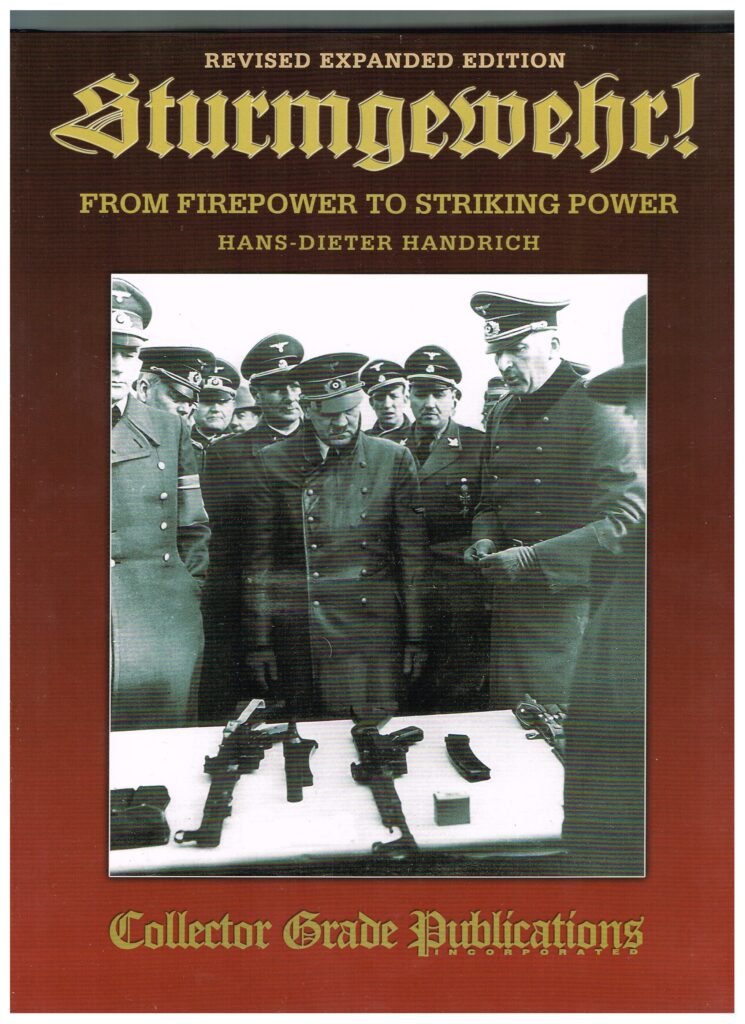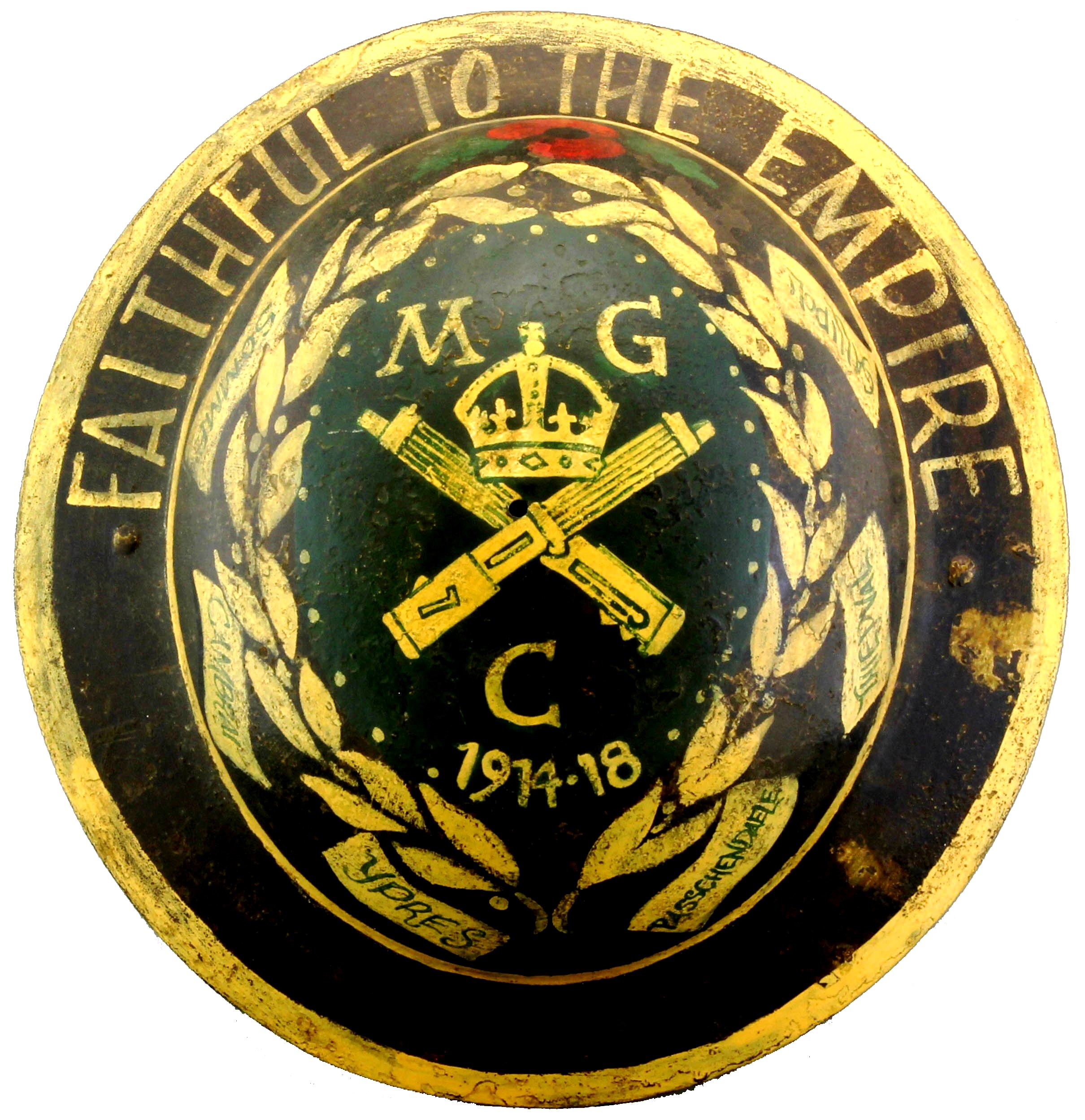By Dean Roxby
Into the Archives of Germany’s Intermediate-Caliber Assault Rifle

Full title: Sturmgewehr! From Firepower to Striking Power (Revised Expanded Edition)
Author: Hans Dieter Handrich
Publisher: Collector Grade Publications, Inc.
ISBN: 0-88935-593-2
Copyright: 2017
Hardcover, with dust jacket: 9” x 11¼”, 720 pages, 514 B&W photos, illustrations, drawings
Website: collectorgrade.com
Available from publisher or SAR store (Item B343)
The Sturmgewehr (German for “storm” or “assault” rifle) StG 44 was the culmination of a program to create a new class of weapons that we know as assault rifles. The generally accepted definition is a select-fire, carbine-sized gun, firing a mid-sized “intermediate” round and fed from a detachable box magazine.
In other words, the rifle and ammo have more power than an SMG that fires pistol rounds but less power and recoil than a full-size infantry rifle.
As we have come to expect from Collector Grade Publications, this book covers the topic in great detail. This fine book certainly does that and touches on other aspects of Nazi Germany weapons development as well.
The author, Hans Dieter Handrich, has revised and enlarged his original book by a substantial amount. The new 2017 edition contains 120 more pages and 122 new illustrations than the original 2004 edition. This brings the current edition to 720 pages and 514 B&W photos, illustrations and technical drawings, etc.
As with other Collector Grade books, this title is divided first into parts and then into chapters. Each chapter is then further broken down into numerous headings and subheadings. This makes the Table of Contents a full 17 pages! This can be viewed as either a good thing or a distraction, depending on your personal point of view.
Part I, Chapter One takes the expected look back at equipment and tactics in the decades prior to WWII. This begins with a brief look at warfare of the late 1700s and early 1800s. Following this, is a look back at WWI and the rise of the machine gun, most notably the Maxim. This leads into the topic of self-loading (semiautomatic, in other words) rifles. A photo of five different designs (three from Mauser and one each from Mannlicher and Borchardt) is shown. All appear similar to the typical bolt action of the era. A Mexican-designed, Swiss-built Mondragón rifle with a drum magazine and a Mauser Model 1916 are also pictured. While several self-loading rifles were tested, none where considered mature enough to be adopted on any serious scale. (A very small number of the Mondragón and Mauser 1916 rifles were issued to the Zeppelin balloon crew for anti-aircraft use.) These all fired full-power rounds and were semiauto only.
After the end of WWI, Germany was stripped of most of her military equipment and prohibited from designing and building more, as decreed by the Treaty of Versailles. However, this was not to be. As author Handrich explains in some detail, Germany disregarded the rules almost from the beginning. At first, these violations were executed very low key, but eventually they became quite blatant. Handrich covers a lot of background history in this book, not just the technical aspects of the StG 44.
Chapter Four, Early Intermediate Cartridge and Rifle Developments, takes a look at several mid-sized cartridges and rifles from several private firms in Germany. These experimental cartridges ranged in bore diameters from 7mm to 8mm and had case lengths from 27mm to 49mm long. Although this new direction caught the attention of the Ordnance Department, none of these early attempts went anywhere.
Part II, Chapter Five is where the gun that eventually became the StG 44 gets its start. In 1938, a year prior to the start of WWII, the Ordnance Department commissioned the C.G. Haenel company of Suhl to develop a select-fire “machine carbine.” Haenel’s chief designer was none other than Hugo Schmeisser, who designed the first operational submachine gun, the MP18/I, during WWI.
Handrich covers the long, sometimes frustrating path that the StG 44 took during its development. This gun has the dubious honor of being renamed the most times during its short career. Just a few of the better known names are: MP 42, MKb 42 (H), MP 43, MP 44 and finally the StG 44.
As the year designations suggest, the process took from 1942 to 1944 to get up to anything close to full production. A good deal of this was due to Adolf Hitler not believing in the idea of an intermediate round. He was stuck on the full-power round, so rifles such as the FG 42 and the G43 (later called the K43) proceeded while the StG 44 had much less official support. In fact, Hitler refused to approve it for full production three separate times. Handrich includes translated text of messages between Hitler’s inner staff and the military to confirm this. Handrich’s own opinion on Hitler’s delay in approving the program is: “There can be no doubt that Hitler’s bans had an extremely adverse effect on the schedule of development, testing and troop trials of the MKb …”
The author includes several images of original teletype messages discussing troop trials during the Eastern (Russian) Front. The text of several more messages, translated into English, document the ongoing troop trial evaluations. The frontline troops thought highly of this new weapon. Reports from the General of Infanterie (GendInf) are also shown, as well as details on monthly quantities delivered to the front. These various reports make for an interesting book, as you can see the progress of the program. A couple of messages are signed by Hitler himself.
Something I enjoyed studying is a set of small sketches (they are not dimensioned, so they cannot be called production drawings) that show the steps involved in turning a raw piece of sheet steel into a receiver. These thumbnail sketches show how the stamping, punching, forming (folding or bending) and drilling operations create a receiver. Most interesting!
English translations of original German military manuals are included. Specific manuals are from the MKb 42(H) and MKb 42(W) (Machine Karabiner 1942 prototypes from Haenel and Walther), the MP 43/1 and the final version, the StG 44. There is also a complete, 48-page, post-War East German manual shown, again with all text translated to English.
A chapter on special accessories looks at items such as a flash hider attachment, grenade launchers, the Vampir infrared riflescope and a long section on the unique Krummlauf curved barrel attachment for firing around corners.
A study of the development of the 7.92x33mm Kurz (short) cartridge is covered in similarly thorough detail. Until reading this book, I was unaware that several different firms were each designing its own idea of the perfect intermediate round or that the Polte company had tried several variants prior to settling on the 7.92x33mm version. These prototypes, along with dummy, tracer, blank, grenade launch blank and other special or experimental rounds are examined in detail. This includes 12 section-view engineering drawings from Polte.
The book wraps up with Part VI: A Post-War Retrospective. Chapter 22 looks at Hugo Schmeisser’s contributions to the AK-47. Following WWII, the Soviets gathered up many German specialists to work in the USSR. Schmeisser was taken to Factory 74 in Izhevsk in October 1946. He remained there until June 1952. During his time in Izhevsk, he worked alongside Mikhail Kalashnikov on what would become the AK-47. Handrich believes that Schmeisser helped a lot in the design, in spite of Kalashnikov saying that Schmiesser’s input was minimal. Schmeisser himself did not talk about it much. He passed away in September 1953.
I did find that the book tends to veer off in different directions as it covers various issues only vaguely related to the Sturmgewehr rifle. For instance, in 1924, the Rifle 98 for bicyclists was renamed the Rifle 98 for (mounted horse) riders. This single paragraph gets its own entry in the Table of Contents. At first, I found this a bit distracting. Later, I began to appreciate these little bits of history. This book has a tremendous amount of technical and historical information related to the Sturmgewehr program and resulting rifle. As well, it has a great deal of info on other aspects of the Nazi Germany weapons program. Although it may be among the most expensive books in your library, it certainly is worth considering. If you have an interest in the early development stages of assault rifles, this work is highly recommended.
| This article first appeared in Small Arms Review V24N9 (November 2020) |












